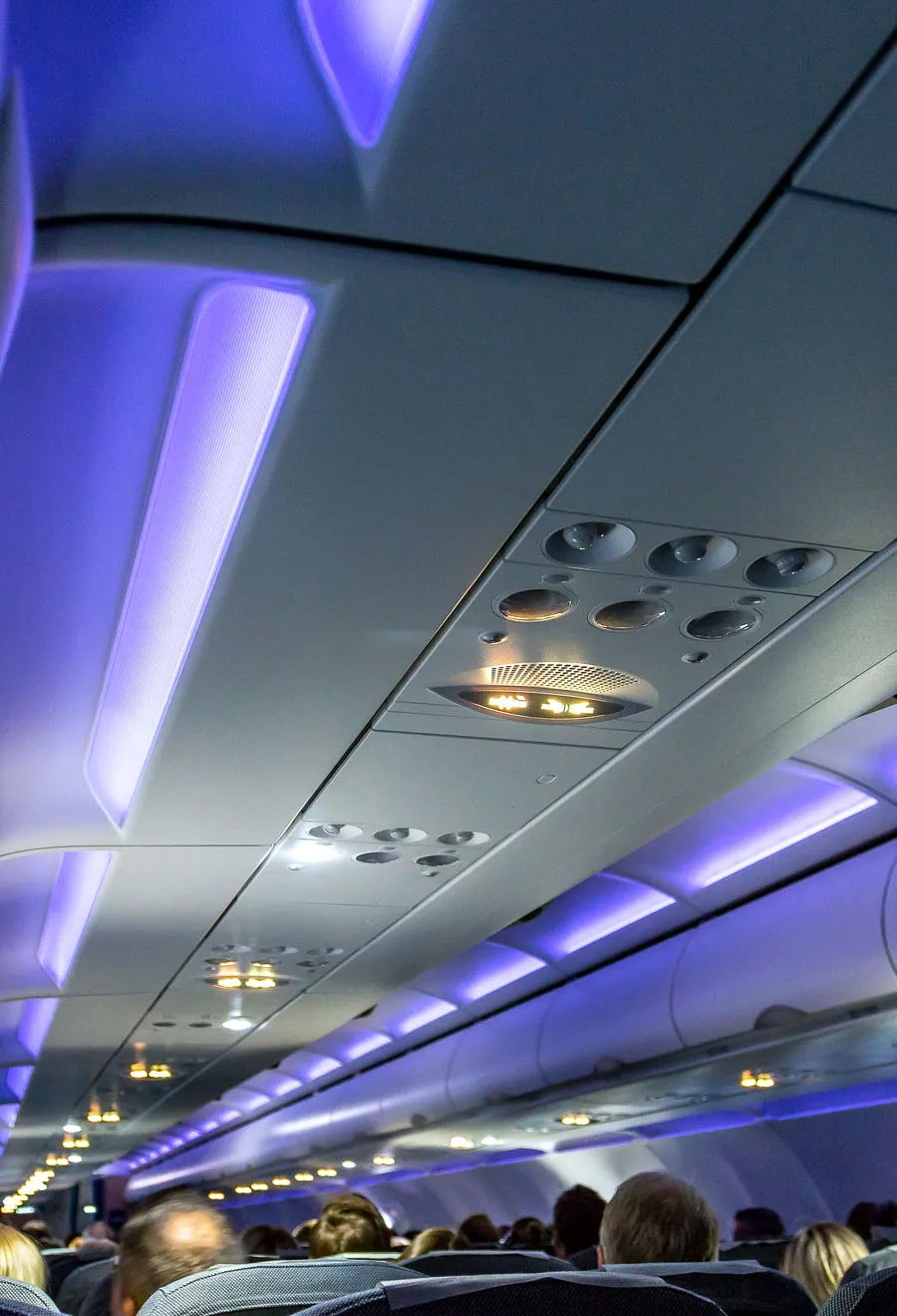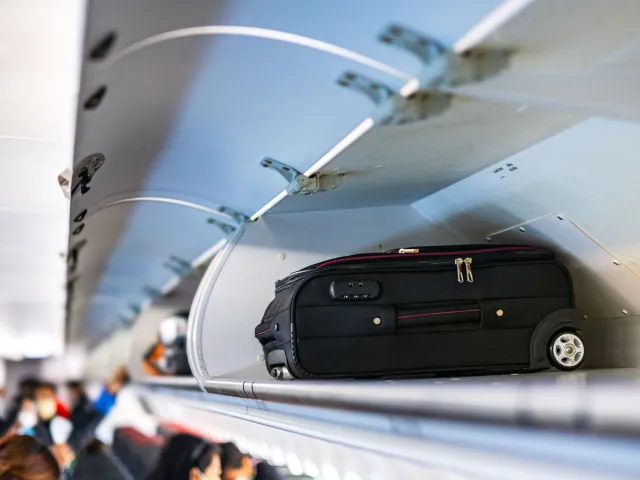Commercial flying is one of the safest forms of travel. According to the International Air Transport Association (IATA), of the 40.6 million flights in 2024, there was only one accident per 810,000 flights. Nevertheless, an analysis from aircraft manufacturer Airbus shows that the takeoff, approach, and landing stages of a flight are statistically when the most incidents happen. Thankfully, clearly defined rules are in place to keep passengers and crew safe. One aspect of these precautionary protocols concerns lighting — you may have noticed that the cabin lights are dimmed before takeoff and again as the crew prepares for landing. Ever wondered why? We’ll explain below.
Your Eyes Need Time To Adjust if It’s Dark
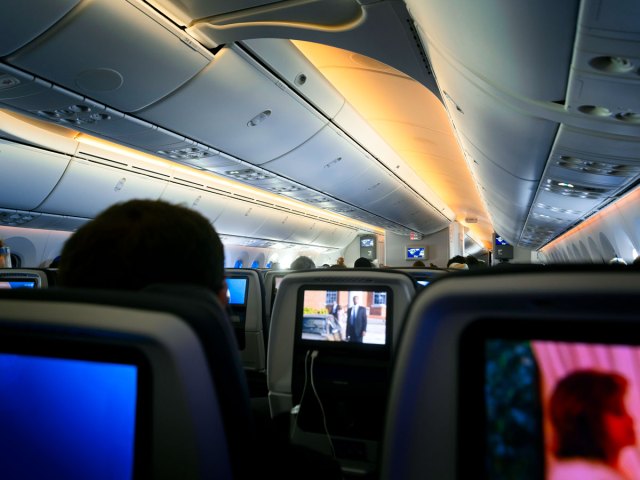
If you walk from a brightly lit space into a dark one — such as when you first walk into a movie theater — it takes a moment for your vision to adjust. In fact, sometimes it takes much longer than a moment — that process, known as dark adaptation, can require as much as 20 to 30 minutes. As light levels recede, photoreceptor cells in the retina called cones and rods become more light sensitive, enabling you to see better.
In the event of an aircraft evacuation, your eyes will need to similarly adjust, especially if it’s dark outside. Therefore, in order to balance out the light levels within and outside the plane, it makes sense for the cabin lights to be dimmed. This gives your eyes a chance to begin to adjust while you’re still on the plane, so that if an emergency evacuation is called for, you have more effective vision as you exit the aircraft.
Exit Lights Are More Visible in a Dim Cabin
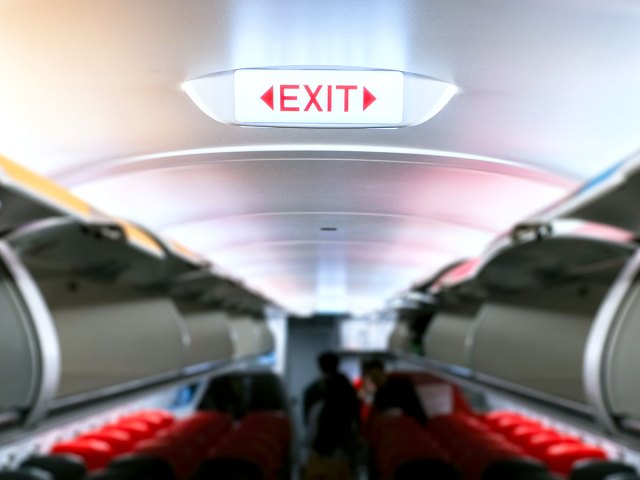
Of course, if you are asked to evacuate the plane, you’ll need to find your way to an emergency exit. One of the features of an aircraft that helps you do so is a line of lights that illuminate the aisle. In the event of a smoke-filled cabin, for instance, the floor of the aircraft is likely to be where visibility is greatest, which is why the lights are embedded into it.
Interestingly, in situations when your vision is impaired, studies show that up to 83% of your wayfinding ability is lost. A smoke-filled cabin can therefore seriously impair a traveler’s ability to safely evacuate, meaning that every single precaution that can be taken to counteract this disadvantage should be in place.
Though passengers are instructed to note the position of the nearest exit row during the crew’s safety briefing, this information may not register, or it may be forgotten in the event of an emergency. Emergency exit lights play a crucial role in helping passengers reach the exits as quickly as possible — and they will be easier to pick out if your eyes have already adjusted to a dim cabin.
You’ll Be Better Able To See What’s Happening Outside
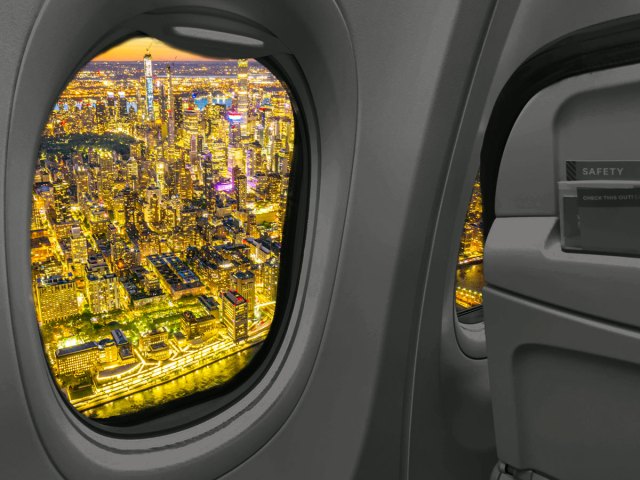
In addition to dimming the cabin lights, sometimes you’ll find that crew members also instruct passengers to open window shades, at least in certain seats, which allows all those on board to better see what’s going on beyond the aircraft windows. On a routine flight, this means that travelers in a window seat will be able to enjoy the view, but really it’s safety that drives this.
These regulations ensure the cabin isn’t as brightly lit and are also useful in extraordinary circumstances when it could be beneficial to know what’s going on outside the aircraft. This may be especially advantageous if the plane is on the ground but the need to steer clear of a part of the aircraft effectively puts an emergency exit out of action.
Featured image credit: Santiago Urquijo/ Moment via Getty Images
More from our network
Daily Passport is part of Inbox Studio, which publishes content that uplifts, informs, and inspires.






